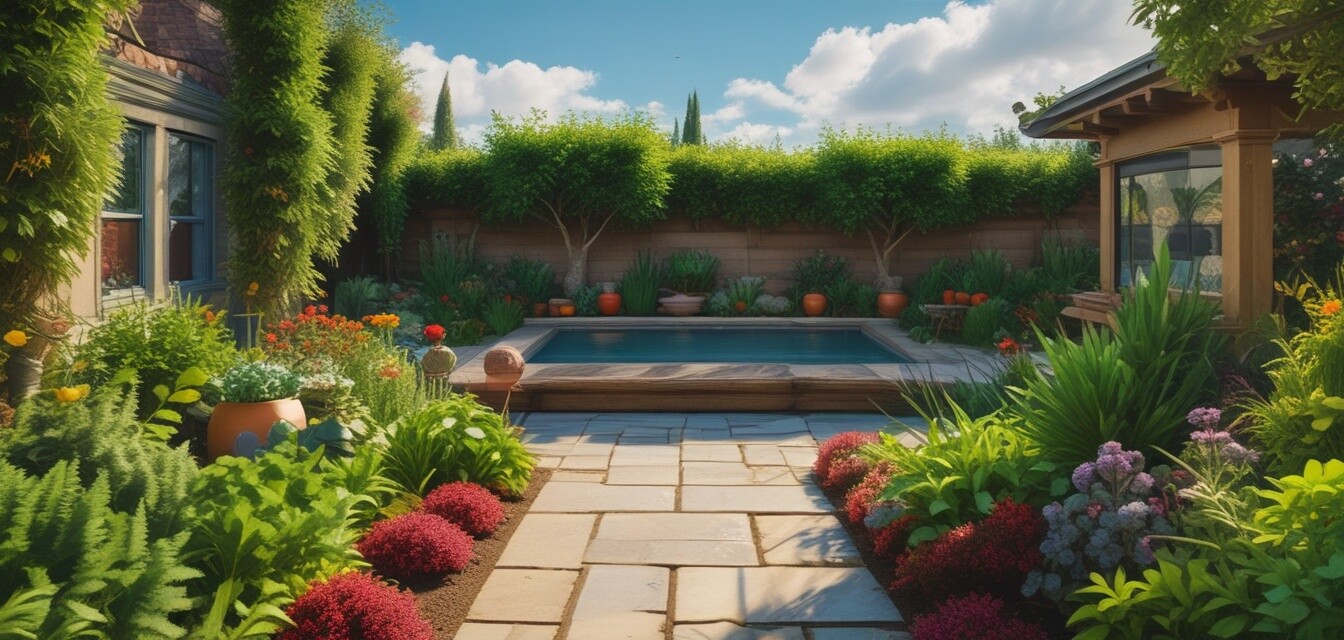
The rising popularity of edible landscaping
Key Takeaways
- Edible landscaping combines aesthetics with functionality.
- Homeowners are increasingly incorporating food-producing plants into their designs.
- Sustainable gardening practices are becoming a trend in modern landscaping.
- Edible plants can enhance biodiversity and attract beneficial wildlife.
- Proper planning is essential for successful edible landscapes.
The gardening world is experiencing a transformation, with homeowners embracing the concept of edible landscaping. This innovative approach blends beauty with utility, allowing you to enjoy both the visual appeal and the delicious bounty of produce in your own backyard. In this article, we'll explore the rising popularity of edible landscaping, how it's implemented, and the trends shaping this exciting movement.
Understanding edible landscaping
Edible landscaping refers to the design of gardens that incorporate food-producing plants alongside traditional ornamental plants. This approach has rapidly gained traction among homeowners looking to create multifunctional outdoor spaces. It's not just about planting a few vegetables; it's about integrating fruits, herbs, and flowers to enhance both beauty and sustainability in gardens.
Benefits of edible landscaping
- Fresh produce: Homeowners can harvest fruits and vegetables from their yards, promoting healthy eating.
- Sustainability: Reduced reliance on store-bought produce lowers carbon footprints.
- Wildlife attraction: Edible plants can attract beneficial wildlife, such as pollinators and natural pest controllers.
- Cost-effective: Growing your own food saves money in the long run.
Popular plants for edible landscapes
| Type of Plant | Benefits | Examples |
|---|---|---|
| Fruits | Sweet and nutritious components for landscape | Strawberries, blueberries, apple trees |
| Vegetables | Versatile and edible all year round | Tomatoes, peppers, lettuce |
| Herbs | Enhance flavors in cooking and attractive foliage | Basil, rosemary, mint |
| Edible flowers | Add visual appeal and can be used in salads | Marigolds, nasturtiums, pansies |
Designing an edible landscape
Successfully integrating edible plants into your landscape design requires thoughtful planning. Here are some tips for creating a beautiful and functional edible landscape:
Tips for beginners
- Choose the right plants: Select plants that thrive in your region and climate.
- Plan your layout: Consider sunlight and spacing for each type of plant.
- Mix aesthetics: Combine colorful flowers with edible plants for visual appeal.
- Maintain soil health: Use compost and organic fertilizers to nourish your plants effectively.
Trends in edible landscaping
The popularity of edible landscaping has spurred various trends that reflect current interests in sustainability, aesthetics, and community involvement. Here are a few emerging trends:
- Vertical gardens: Space-saving solutions for urban areas, allowing for food production in small footprints.
- Native plants: Using local flora that requires less maintenance and supports local wildlife.
- Hydroponics and aquaponics: Innovative systems that allow growing food plants without soil, conserving water and space.
- Community gardens: Increasing collaboration among neighbors to share resources and cultivate together.
Future outlook for edible landscaping
As more homeowners become aware of the benefits of growing their own food, the trend of edible landscaping is expected to continue its upward trajectory. The focus on sustainability, healthier lifestyles, and a desire to connect with nature is likely to foster a greater interest in edible gardens.
Conclusion
Edible landscaping is not just a passing fad; it's a movement towards sustainability and responsible gardening. By incorporating edible plants into your landscape, you can enjoy both an aesthetically pleasing environment and the many benefits of homegrown produce. To explore further on how to effectively design, maintain, or expand upon your garden, check out our resources on greenhouses & plant protection, eco-friendly fertilizers, and buying guides.
Pros
- Provides access to fresh produce
- Encourages sustainable practices
- Enhances biodiversity in gardens
- Cost-effective in the long run
Cons
- Requires regular maintenance
- Seasonal limitations for certain crops
- Space constraints can limit variety